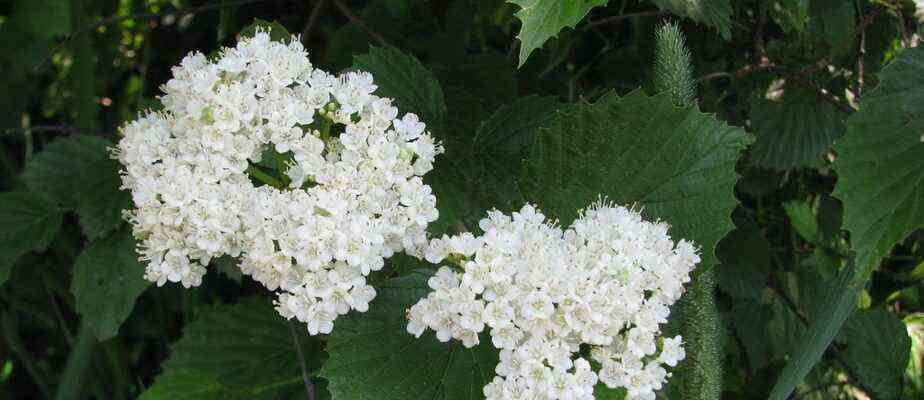At least 12 of the 26 plant species at risk that the Quebec government refuses to protect to date despite the recommendations of its experts are threatened by human activities, according to documents obtained by The Press.
Land drainage, quarrying, urban sprawl and trampling are among the human activities that threaten these rare and unprotected plants, indicates a summary of the recommendations of the Advisory Committee on Threatened or Vulnerable Flora provided by the Ministry of the Environment.
Last week, The Press revealed that 24 rare plant species were “pending” protection status in line with the Committee’s recommendations.
But at least two other species—the rock rose (Crocanthemum canadense) and the longistyle ring (Juncus longistylis) – had been mistakenly omitted from the tables transmitted at that time by the Ministry of the Environment following a request for access to documents from public bodies, for a total of 26 pending recommendations.
The Committee recommended a status of “threatened” under the Threatened and Vulnerable Species Act for 9 of the 12 species endangered by human activities. The species which are the subject of such a recommendation are those “whose disappearance is apprehended”, specifies the Committee.
The other three species should be designated “vulnerable”, that is to say that their “survival is precarious even if the disappearance is not apprehended”, according to the Committee.
The species in question
Rock rose is threatened by “forest management and potentially by the exploitation of sand pits” while the bulrush is potentially threatened “by various human activities”, according to the summary of the Committee’s recommendations.

PHOTO FROM WIKIPEDIA COMMONS
Hairy wildrye (Elymus villosus)
The disputed viburnum (Viburnum recognitum) is threatened “by industrial and residential development” while hairy wildrye (Elymus villosus) is threatened “by trampling, development of urban parks, urban expansion”.
The many-leafed locoweed (Oxytropis deflexa subsp. foliosa) is “very sensitive to possible roadwork related to Route 132” in Gaspésie, and the Pringle aster (Symphyotrichum pilosum var. pringlei) could be threatened by limestone mining in Montérégie.
The Committee recommended as early as 2010 that these six species be designated as threatened.
Dense sedge (Sedge cumulata) is threatened by “drainage of peripheral land” and “potentially by exploitation of bedrock”. The Committee recommended in 2011 that it be designated as threatened.
Its close relatives, hair-leaved sedge (Atlantic sedge subsp. capillacea), also threatened by drainage, and spiny sedge (Sedge echinodes), threatened by management activities in a Montreal woods where the only known population in Quebec is found, should also be designated as threatened, according to recommendations from the Committee made in 2019.

PHOTO FROM WIKIPEDIA COMMONS
American ceanothus (Ceanothus americanus)
American ceanothus (Ceanothus americanus) is potentially threatened by unspecified human activities and the Committee recommended in 2010 that it be designated as vulnerable.
Finally, two species — the small-petaled drive (Draba micropetala) and the subcapitated drive (Draba subcapitata) — have populations on “territories covered by active mining titles and where mines are in operation nearby” and the Committee recommended in 2014 that they be designated as vulnerable.
Some species face other threats, such as browsing by white-tailed deer or competition from invasive species.
Modernization of the law
“We need to modernize the Threatened and Vulnerable Species Act and we hope that the Quebec government will benefit from the coming of COP15 [sur la biodiversité] in Montreal to announce its intention” to do so, claims Alain Branchaud, general manager of the Society for Nature and Parks (SNAP Quebec), in the face of these new revelations.
No less than 17 of the Committee’s 26 recommendations have been pending for more than 11 years. The most recent are from November 2019.
A modernization of the law “would make it possible to ensure that we have a process of evaluation and registration in the law that is transparent”, according to Mr. Branchaud, and thus to avoid that we let “species like that hang around for 10 years in never-ending interdepartmental consultations”.
The Press asked the Ministry of the Environment for the reasons explaining the delays in implementing the recommendations for each of the species threatened by human activities. The Department did not respond to this question.
The decision, taken by the Council of Ministers, “takes into account in particular the impact on citizens as well as on the social, economic, environmental, territorial and governance dimensions”, explains however the spokesperson for the Ministry, Caroline Cloutier.
“It is worrying to note that the issues of environmental protection and preservation of biodiversity are only elements among others”, reacts Me Anne-Sophie Doré, lawyer at the Quebec Center for Environmental Law (CQDE).
Mme Cloutier, from the Ministry, recalls that the government designated 11 new threatened or vulnerable species by regulation earlier this year following the recommendations of the Committee. Some faced imminent development threats, she said.
